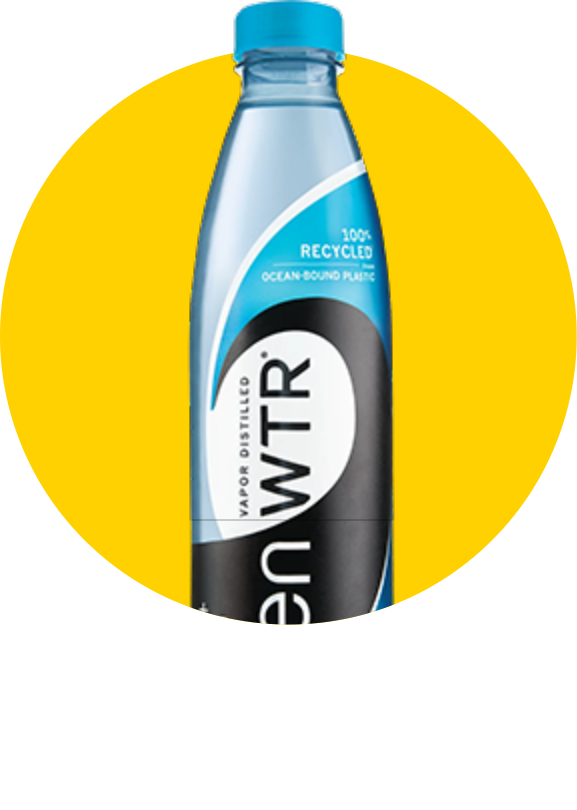It's no secret that product launches are essential for driving revenue and growth for a business. But what's the best way to launch a product? Should you target retail stores, go direct–to–consumer, or launch on Amazon?
In this blog post, we'll explore the pros and cons of each approach and the factors to consider when choosing the best CPG product launch strategy for your business.
Amazon
One of the most common channels particularly well-suited for new products is Amazon.
An Amazon product launch is an excellent take-off for CPG brands because of its broad reach and large customer base.
Many CPG brands also find it easy to set up a listing on Amazon and use it to do initial market research to see how their product is doing.
However, Amazon doesn't take kindly to anything that looks like a brand hijacking or “brandjacking.” Brandjacking on Amazon happens when an unauthorized seller starts selling your product or a counterfeit version of it for way cheaper, undercutting your pricing. In these instances, Amazon may remove your listing along with the unauthorized seller.
Amazon is also a very crowded platform, so it can be challenging to stand out among all the other listings. It can also be expensive to advertise and get your listings to appear on top search results if it’s in a crowded category.
D2C
D2C has gained a lot of media attention and traction among CPG brands over the last few years, and especially at the height of the COVID pandemic.
Direct–to–Consumer can be a great way to launch a new product since you have more control over the customer experience. You can create a landing page that explains the product in detail, and customers can purchase it directly from your website.
Dollar Shave Club used to go through retailers but are now doing exceptionally well through its D2C strategy, enjoying the benefits like building a stronger relationship with customers and avoiding operational inefficiencies in retail, i.e., retailer politics, fight for shelf space.
However, setting up your D2C channels can be complex and more expensive. You’ll have to figure out the logistics, warehousing, and distribution to get your products to customers. You’ll also need a robust marketing strategy with a D2C product launch to win more customers and retain them.
Retailers
If you have a relationship with a retailer, they may be interested in stocking your product. Retailers also have a reach that D2C companies don’t have—they can sell your product to customers who wouldn’t usually find your website.
However, with retailers, you'll need to compete with other brands for shelf space (and hope the software that retailers use to decide on shelf placement will somehow get your brand at eye level.) You'll also have to share profits with the retailer.
Factors To Consider When Choosing Where to Launch a New Product
When launching a new product, it's essential to consider a range of factors including:
-
Audience
-
Category
-
Brand
-
Economics
-
Rollout
Audience
When launching a new product, you must consider your audience and where they are active. For instance, if your target market is primarily on the east coast, you’ll want to focus on retailers in that region.
If your audience is active on Amazon, it might make sense to launch there. And if they spend most of their time on TikTok or Instagram, these platforms should comprise a significant portion of your social media strategy. You must also have an experienced marketing team or consultants who will implement your marketing strategies.
Category
Look into where or how other players sell their products. How do other players in your category sell their products?
If your category is heavily regulated, such as pharmaceuticals, retailers might work better for you than Amazon or D2C.
Brand
If you’re a young brand without name recognition, you may need to lean on retailers or Amazon to help promote your product.
It’s also important to consider the brand image you want to project. For instance, Amazon may not be the best fit if you’re a luxury brand.
Economics of Your Launch
It’s important to consider all the costs associated with launching a new product, including the cost of goods (COGs), seller fees for Amazon, retailer fees, and other costs associated with the launch—things that should be factored into your pricing so that you make a profit.
Also, consider your competitors and the industry to baseline your pricing and costs. For example, if you’re launching a new dishwashing detergent, you’ll want to compare other brands' price points and COGs to understand how and where to position your product.
Rollout
How can you roll out the product launch and what are the various logistics involved in making it a raging success?
Perhaps as a new brand, you can start with a soft launch to a limited audience or region. This serves as a litmus test for your new product—how is it received by your target buyers? What’s the product placement, retail and channel mix that works best? Which marketing strategies work better than others?
A soft launch allows you to start small and amplify the efforts that have worked later on, compared to sinking tons of money into a broader launch that doesn’t quite work.
How Helio Can Help You Nail Your New Product Launch
Helio’s CPG data platform can help you launch a new product by providing information on competitive pricing, strategies and trends, category-specific data, and audience insights. It determines what channel or retail mix would be best suited for your launch based on the performance and growth trajectories of others in your category.
Our platform is easy to use, and our data is easy to analyze. But if you need a little extra help, our team of data experts loves sinking their teeth into custom projects.
- For brand managers, Helio can help you plan your line extension or new brand launch by analyzing the competitive landscape, evaluating customer sentiment, and providing pricing insights.
- For innovation managers, Helio provides insights on market trends and customer preferences—tracking key purchase criteria by brand and category, identifying brand count and growth by attribute, and searching consumer reviews by brand and sentiment—to inform your product design decisions.
- For marketing managers, Helio provides information on retail and channel mix by brand and category, providing you with insights on the most effective ways to launch your product and maximize visibility in the marketplace.
With its comprehensive suite of tools, Helio can help you launch your new product with confidence.
Don't wait any longer—contact us now to get started on your journey to successful CPG product launches!
We’re more comprehensive.
Our platform is the industry’s most comprehensive: pulling data from more brands (over 1.4 million) and more sources (over 200) than the competition.
We’re more comprehensive.
Our platform is the industry’s most comprehensive: pulling data from more brands (over 1.4 million) and more sources (over 200) than the competition.
We’re more comprehensive.
Our platform is the industry’s most comprehensive: pulling data from more brands (over 1.4 million) and more sources (over 200) than the competition.
We’re more comprehensive.
Our platform is the industry’s most comprehensive: pulling data from more brands (over 1.4 million) and more sources (over 200) than the competition.
By understanding how these trends will impact the CPG landscape, you can position your business for success.
To learn more about Helio or get in touch, visit heliodata.com.


